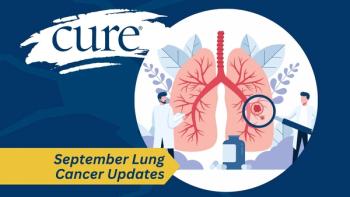
Some Cancer Survivors May Be at Higher Risk for Bone Fracture
Factors such as cancer stage, treatment with chemotherapy and smoking status may put cancer survivors at risk of bone fracture.
Adult cancer survivors, specifically those who have received chemotherapy and/or a diagnosis within five years, are at an increased risk for bone fractures, particularly in the pelvic and vertebrae, according to a recent study.
Study results, which were published in the JAMA Oncology journal, also demonstrated that survivors who were physically active were at less of a risk of bone breakage and those who smoked had a higher risk.
“These findings are important as the number of cancer survivors living in the United States is projected to rise to 26.1 million by 2040. Research like this seeks ways for cancer survivors to have a better quality of life after their diagnosis,” said Dr. Erika Rees-Punia, senior principal scientist, behavioral and epidemiology research at the American Cancer Society and lead author of the study, in a press release. “Fractures of the pelvis and vertebrae are more than just broken bones – they are serious and costly.”
Rees-Punia and researchers analyzed the association between cancer diagnosis (time and stage) and the risk of pelvic, radial and vertebral fractures compared to adults without a history of cancer. They also examined if risk of fracture was increased or decreased due to behaviors, treatment and cancer type.
Among 92,431 participants included in the study, 12,943 experienced a frailty-bone fracture. Cancer survivors who were diagnosed with an advanced cancer stage within five years were at the highest risk for bone fractures compared to those without a history of cancer. The highest sight of fracture risk was in the vertebrae and pelvic sites.
Additionally, cancer survivors who received treatment with chemotherapy were more likely to have a fracture, compared to those who didn’t. Results also demonstrated that physical activity may be associated with a lower risk of bone fracture, whereas current smoking was associated with a higher risk for cancer survivors five years or more after diagnosis.
“We hope our findings will inform clinical guidance on fracture prevention, which could incorporate physical activity with exercise cancer professionals and smoking cessation programs, to improve quality of life after a cancer diagnosis,” Rees-Punia added in the release.
For more news on cancer updates, research and education, don’t forget to





